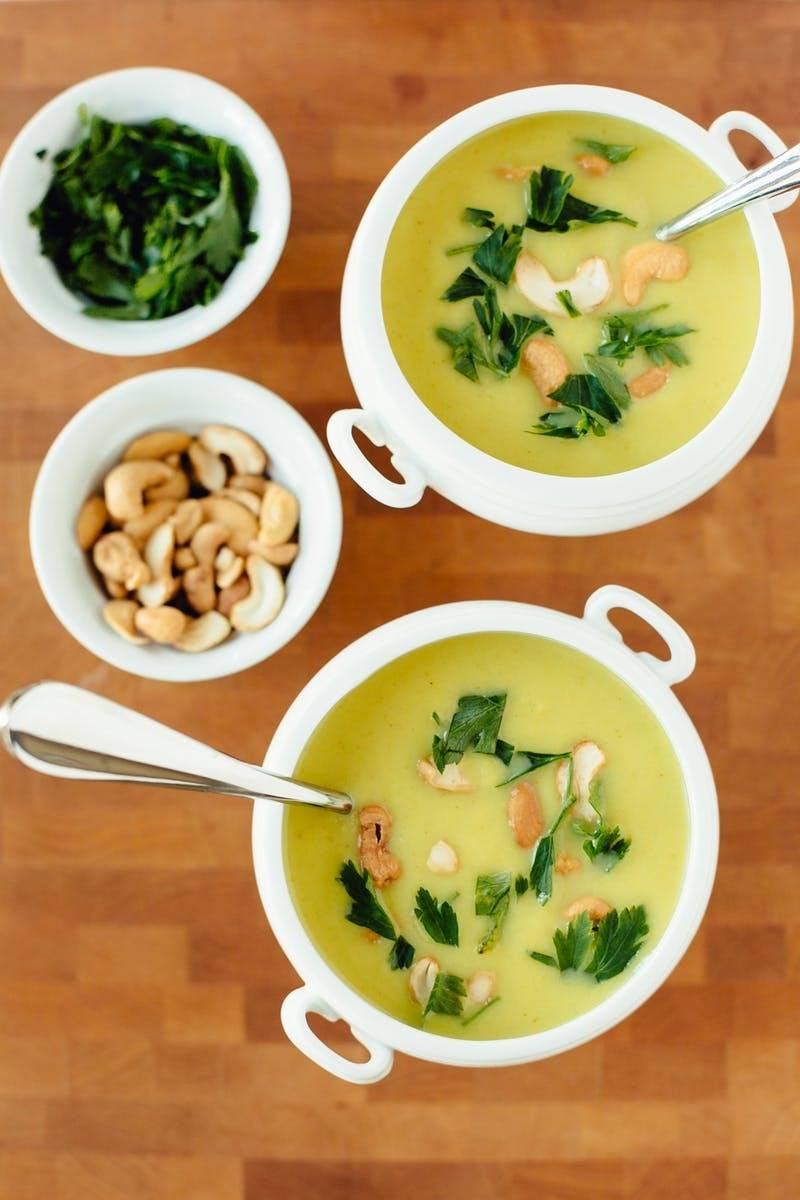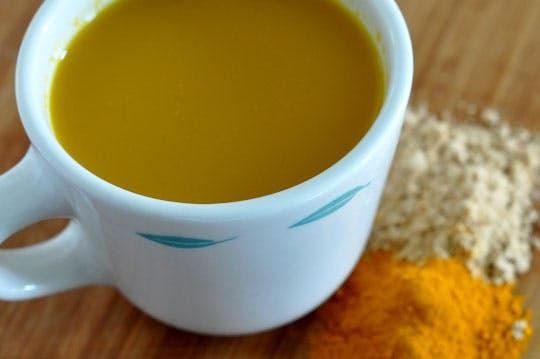Originating in Southern Asia, traditionally, turmeric root (usually dried and cooked and turned into powder) has been used as a spice for dishes in the traditional cuisine, fabric or food coloring aid, and for medical purposes due to its anti-inflammatory effect and great aid in curing bruises, blood in the urine and toothache. With numerous clinical trials testing its active compound curcumin, turmeric has now been proven to improve brain health, cardiovascular health and tissue health. [1] [2]
Turmeric main nutrients
Serving Size: 1 tbsp (7 grams)
Calories 24 Calories from Fat 6 Total Fat 1 g 1% Saturated Fat 0 g 1% Trans Fat Cholesterol 0 mg 0% Sodium 3 mg 0% Total Carbohydrates 4 g 4% Dietary Fiber 1 g 6% Vitamin C 3%
With no sugar, 16% of iron and 1g of protein per 7 grams, turmeric is a beneficial aid in daily nutrition.
Health benefits of turmeric
Turmeric improves digestion Turmeric has positive effect on the digestion. As the 2015 research shows [3], turmeric and ginger help in curing stomach ulcer. Stomach ulcer develops as a result of an imbalance between digestive fluids in the stomach and duodenum and a Helicobacter pylori bacteria that cause pain in the stomach lining. According to the research turmeric “inhibited ulcer by 84.7%” adding that “ethanol-induced lesions such as necrosis, erosion and hemorrhage of the stomach wall were significantly reduced after oral administration of essential oils”. Turmeric aids in depression treatment A study [4] published in the Journal of Affective Disorders shows that turmeric has the potential for treating major depressive disorder. A randomized, placebo-controlled study found a significant antidepressant effect of turmeric on people with major depressive disorder. A 2007 study [5] also found that turmeric could be an effective anti-depressant agent. Turmeric treats rheumatoid arthritis In a 2012 randomized, pilot study [6] the effects of turmeric on rheumatoid arthritis were tested and they showed surprisingly great results. Turmeric actually showed better results of improvement of the condition than the traditionally used drug diclofenac sodium. Turmeric regulates lipid levels A 1992 study [7] shows that active compound of turmeric, curcumin, taken daily, can help regulate the lipid levels in humans by increasing “good” cholesterol and decreasing “bad” cholesterol. Namely, “a significant decrease in the level of serum lipid peroxides (33%), increase in HDL Cholesterol (29%), and a decrease in total serum cholesterol (11.63%) were noted” after healthy volunteers were taking 500 mg of curcumin per day for 7 days. Additionally, curcumin from turmeric was proven to have better effect on regulation of lipids than vitamin E, as the study [8] shows. Turmeric improves antioxidant mechanisms The ability of curcumin to stimulate the antioxidant mechanisms was tested and proven in a number of studies. [9] This means that curcumin aids in the process of fighting free radicals that cause aging and many diseases. Turmeric aids in prevention and treatment of Alzheimer’s disease Additional studies need to be conducted in order to test the ability of curcumin to prevent and treat Alzheimer’s disease, yet a study [10] has found that curcumin can help to clear the buildup of protein tangles called Amyloid plaques which are one of the main causes for the disease. Turmeric accelerates the wound healing process A 2006 [11] and a 2014 [12] studies have found that curcumin in turmeric has great potential to speed up the wound healing process. Namely, the active compounds in turmeric can help to soothe irritation and oxidation, improve wound contraction and and increase tissue strength and cell proliferation around the wound.
Turmeric side effects
As with any type of food, it is important to consume turmeric in moderation, as any overuse can lead to possible side effects. Turmeric side effects include
Nausea and diarrhea – curcumin in turmeric can cause the irritation in the intestinal tract [13] Increased risk of bleeding – Turmeric can slow blood clothing, and in combination with some medicine, can even cause excessive bleeding Hyperactive gallbladder contractions – Turmeric has the potential of increasing the levels of oxalate in urine Hypotension (lowered blood pressure) – High dosages of turmeric can significantly lower blood pressure Uterine contractions in pregnant women – Pregnant and breastfeeding women shouldn’t take turmeric other than spice in food, since supplement turmeric can cause serious side effects
Allergic reactions – Possible allergic reactions to turmeric include mild, itchy rash after skin exposure
Fresh or dried, powdered turmeric
There are two forms in which you can find and use turmeric, therefore, there are some suggestions on how to pick the right one for your needs. Fresh turmeric is a root turmeric that resembles ginger. A 2015 study [14] has shown that fresh turmeric has more bioavailability, meaning that the body will use its most effective compounds more easily. Fresh turmeric can be used to make tea; you can grate it into soups, salads or vegetables before roasting; it can be blended into smoothies and juiced into juices. Dried turmeric is made by peeling, drying and grounding into powder. Even though some of the healthy ingredients are lost during the process, several studies show that boiling and heating actually increase the curcumin levels and enhance the antioxidant properties of the compound. [15]
Turmeric uses, side effects and recommended daily consumption
Turmeric is especially recommended for patients suffering from dyspepsia (upset stomach), osteoarthritis, and rheumatoid arthritis, according to WebMD. However some conditions don’t respond well to turmeric and its active compound curcumin, therefore turmeric might not be safe for
Pregnant and breastfeeding women People with Bleeding disorders Diabetes Hormone sensitive disorders Iron deficiency Who are preparing for surgery or who have recently undergone one
Recommended dosages of turmeric for adults according to University of Maryland Medical Center Cut root: 1.5 – 3 g per day Dried, powdered root: 1 – 3 g per day Standardized powder (curcumin): 400 – 600 mg, 3 times per day Fluid extract (1:1) 30 – 90 drops a day Tincture (1:2): 15 – 30 drops, 4 times per day
Healthy and super easy turmeric recipes for you to try at home
Here are some suggestions on how to make healthy and simple turmeric meals and beverages at home.
Cauliflower Steaks with Ginger, Turmeric, and Cumin
Add a bit of turmeric warm and healthy flavor to your regular roasted vegetables for a perfect dinner.
Vegan Creamy Curried Cauliflower Soup
Quick and easy recipe for a perfectly creamy, warm and slightly spicy soup.
Turmeric-Ginger Tea
Super easy and extremely powerful warm beverage to fight even the nastiest cold.
Featured photo credit: Pixabay via pixabay.com


